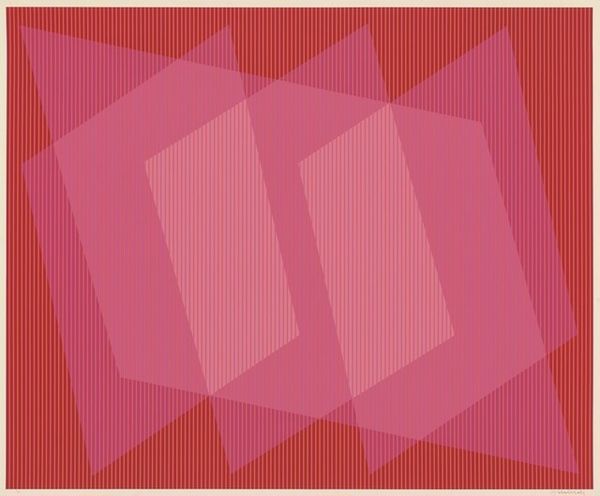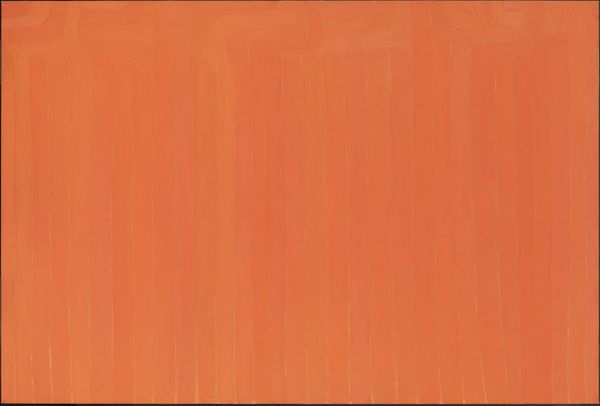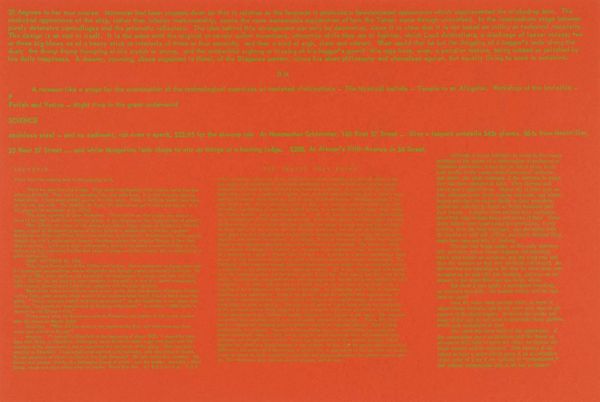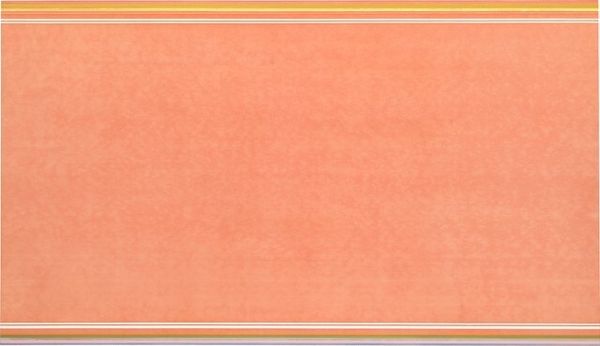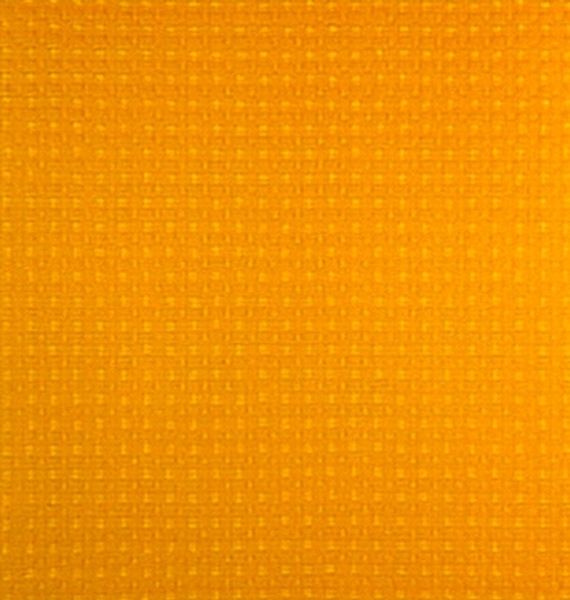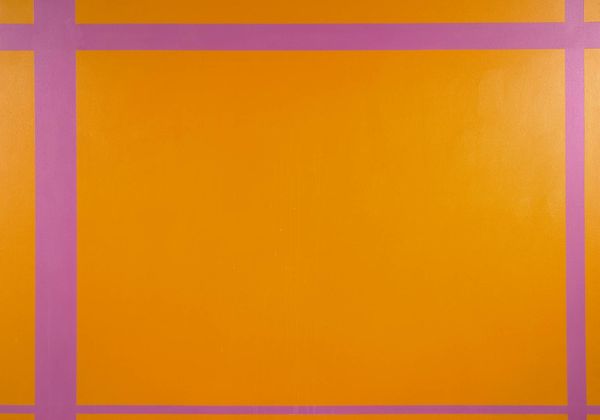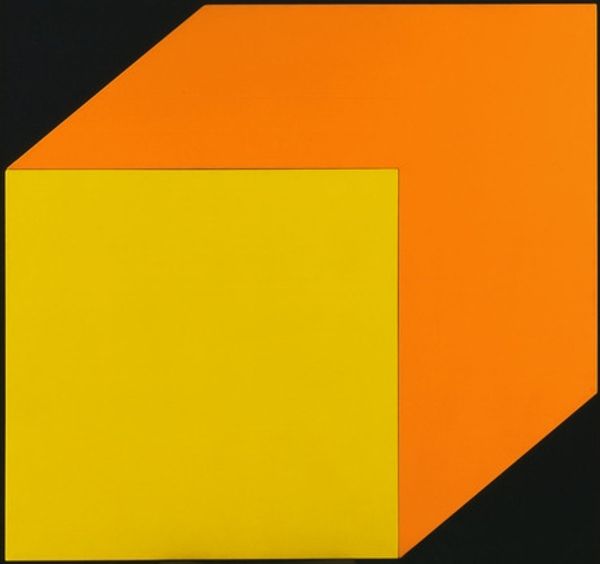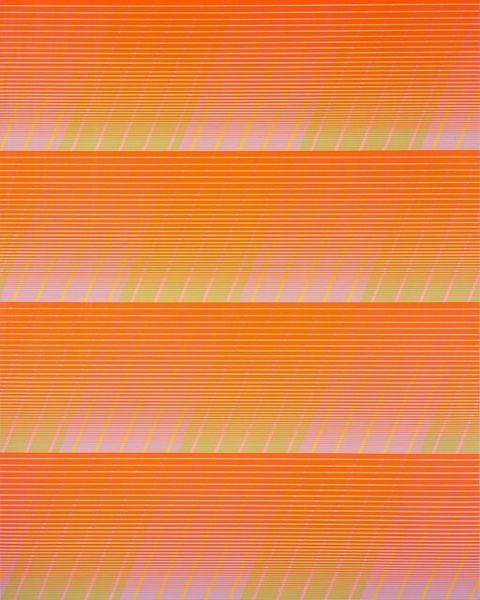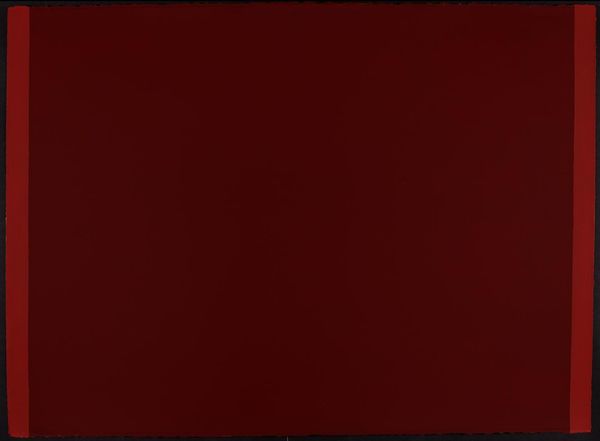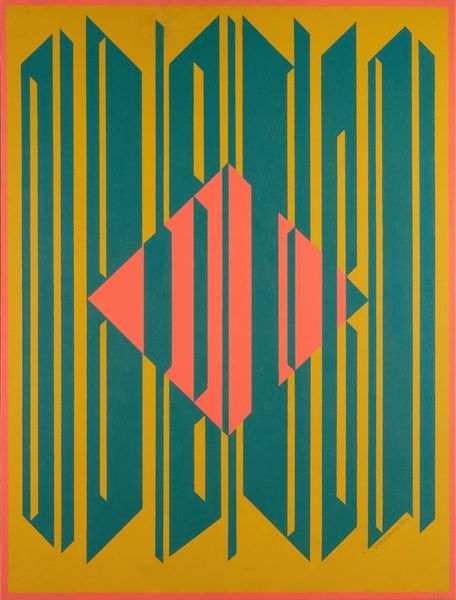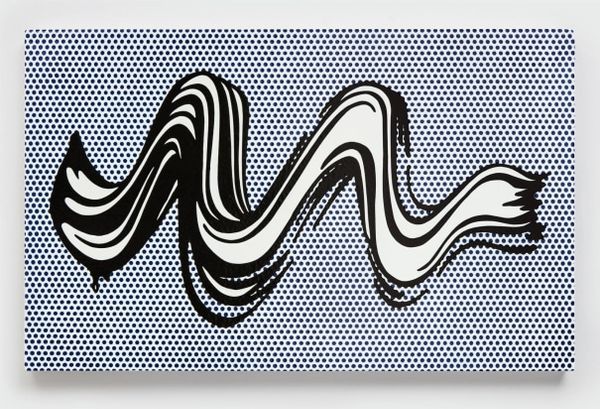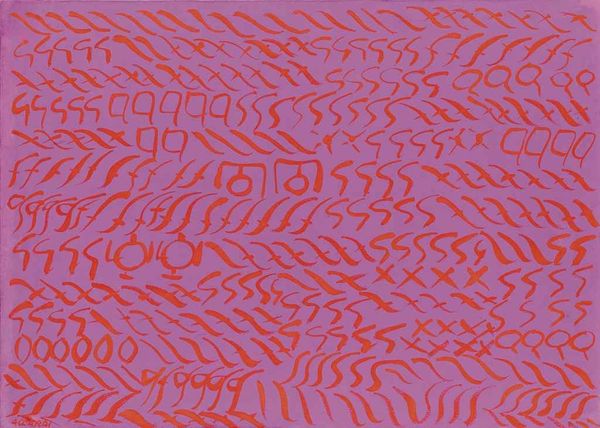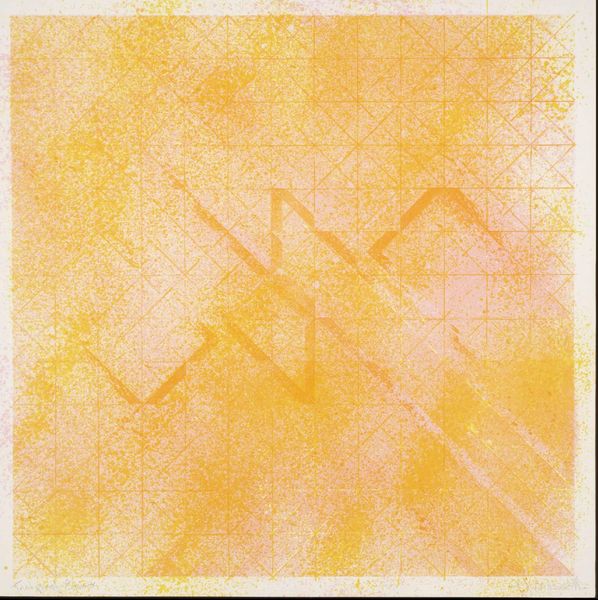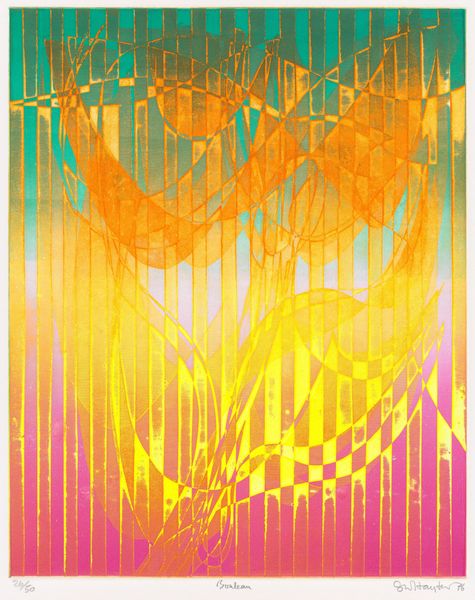
#
random pattern
#
op-art
# print
#
geometric pattern
#
repetitive shape and pattern
#
organic pattern
#
geometric-abstraction
#
simple pattern
#
repetition of pattern
#
vertical pattern
#
pattern repetition
#
layered pattern
#
combined pattern
Copyright: National Gallery of Art: CC0 1.0
Curator: Before us hangs "Dimensional," a 1971 print by Julian Stanczak. Editor: It’s striking! The monochromatic palette, that pulsing orange, gives it an immediate vibrancy. Almost unsettling. Curator: Stanczak's work frequently explores the effects of color and form, aligning him with the Op Art movement. Consider the relationships between those repeated vertical lines and the translucent planes layered on top. Editor: Right, there’s a real push and pull happening here. The superimposed geometric shapes interact dynamically with the consistent, unyielding striations. Do you think he's responding to a societal demand for stability amid the constant flux of the late twentieth century? Curator: Perhaps. We can also see this exploration within a visual system: How simple geometric forms, deployed methodically, create complex visual effects. Notice how the overlay makes some areas appear darker and others lighter, even though only a single color is employed. It plays on our perception. Editor: The piece almost vibrates. It evokes for me a period fascinated by new technologies, a cultural moment absorbed by both utopian ideals and anxieties about mechanization. The relentless repetition almost feels machine-made. Curator: The seriality connects with concerns that ran through post-war art. And don't overlook the visual intensity itself! It challenges conventional aesthetics, prioritizing perception over representation. It’s like an immersive environment contained within a frame. Editor: Looking at "Dimensional" from a historic lens, I keep thinking about how much faith the era placed on visual culture, for advertising, for political imagery, everything. How did this fit within, perhaps even critique, that moment? Curator: Interesting questions! What Stanczak achieves is to turn pure visuality into the very subject matter. By attending to elements such as repetition and linear perspective, he builds the viewing experience from the ground up, disrupting a passive reception. Editor: Seeing it that way helps me rethink its original, visceral impact and how it has changed over time. It speaks about a distinct aesthetic ideology! Curator: Yes, and thinking through his systematic organization of pure perceptual effects might well provide new avenues to appreciate Stanczak’s unique achievement. Editor: Indeed! It highlights the dynamic interplay between individual perception and broader cultural forces.
Comments
No comments
Be the first to comment and join the conversation on the ultimate creative platform.
